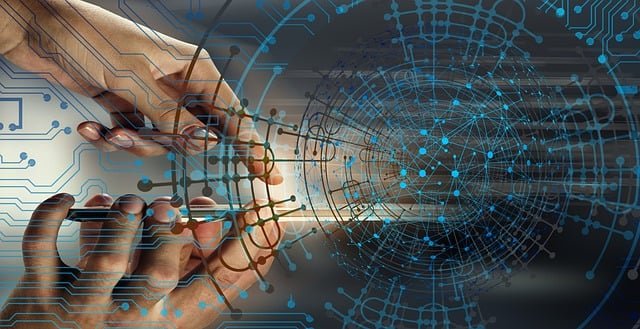Revolutionizing Automotive Production: How 3D Printing Enhances Efficiency and Customization in Vehicle Manufacturing
Introduction to 3D Printing in Automotive Manufacturing
3D printing, also known as additive manufacturing, ranks high among the biggest technological breakthroughs the automotive industry has ever experienced. Such an innovative process generates the three-dimensional object layer by layer in terms of material. It can manufacture complex shapes that would otherwise not be achieved in traditional manufacturing. Progress over the years in manufacturing technology will provide a platform for the integration of 3D printing. This integration will fundamentally alter the way automotive components are designed. It will also change how they are produced.

The automotive sector, for most of its years, has relied on subtractive methods of manufacturing. It remains a technique. Material is gradually machined away from a block. This method has been used to create components. These traditional approaches have proven effective in the past. However, they use significant time and adapt poorly to changes in the design. 3D printing has brought a new dimension to this process. It allows faster prototyping and offers the comfort of easily devising design changes. There are many more benefits to this technology. Manufacturers now use a previously unattainable time to create the same, or more, prototypes. This approach reduces lead times and associated costs in many cases.
Enhancing Automotive Manufacturing
One of the most significant benefits of 3D printing to automotive manufacturing is rapid prototyping. Designers can quickly iterate over prototypes. They implement design modifications according to tests and feedback. This process eliminates the long delays typical of traditional manufacturing. Such an accelerated design process fuels innovation. It also allows for customized automotive parts based on unique consumer needs. Consequently, 3D printing allows manufacturers to provide greater personalization in producing vehicles, thereby enhancing customer satisfaction and competitive advantage.
Therefore, 3D printing in the automobile industry is a significant turning point for the sector’s scenario. The ability exists to produce complex and customized parts quickly. This caters to the needs of an increasingly competitive market. The more developed the technology, the more critical it will prove in determining the future of vehicle production.
Benefits of 3D Printed Automotive Parts
The integration of 3D printing technology into the automobile industry signifies a monumental leap toward greater efficiency. It also allows for more tailored permutations. This technology leads to greater sustainability in vehicle manufacturing. One key benefit of using 3D-printed automotive parts is their ability to lower the vehicle’s weight. Manufacturers can enhance the vehicle’s performance by using polymers and advanced alloys. These materials also help cut down on fuel consumption. Lower weight directly correlates with better acceleration, handling, and minimized emissions of greenhouse gases, thereby making it more environment-friendly.
Customization and Personalization in Automotive Manufacturing
Another big advantage of the use of additive manufacturing in the automobile industry is customization. Conventional manufacturing techniques limit design complexities. The mold and tooling processes restrict their execution. However, it enables the production of complex geometries. These geometries can be engineered toward a specific consumer’s requirements, preferences, and tastes. However such personalization does not only bring aesthetic input into better functionality. It also tailors functionality to enhance the individual user experience.
Moreover, 3D printing for on-demand production decreases waste dramatically, which is rather positive for sustainability efforts. Now, rather than producing large volumes of parts, automotive manufacturers can produce just what is needed with the present development. It saves material waste. It also improves the efficiency of the supply chain. Parts are available when needed and change quickly with what is currently demanded in the market. Some bright lights of additive manufacturing’s success are in major automobile companies. Notable examples include BMW and Ford. Both companies have reportedly begun to employ 3D printing in prototyping and production-based manufacturing for vehicle parts. Such examples are promising of how 3D printing can transform the automotive manufacturing scale.
Innovative Techniques and Future Trends in Automotive 3D Printing
This integration of 3D printing technologies into automotive manufacturing might be the greatest revolution. It achieves design flexibility, combined with production efficiency. No doubt, the most notable innovative technique is DFAM or Design for Additive Manufacturing. This technique allows geometries that are impossible or highly expensive with traditional technology. Capable of being optimized for either aesthetic appeal or lightweight, it minimizes material usage.
Second, 3D printing has become increasingly integrated into traditional manufacturing processes. A hybrid method like this allows manufacturers to take the best of both worlds and makes their workflows more efficient. For instance, components can be manufactured conventionally while offering some specific features via 3D printing. This synergy is particularly useful in prototyping when rapid iterations and modifications are much in demand. It enables quicker testing of design and refinement. Consequently, it reduces the time required to introduce new models to the market.
Next, advanced materials are playing a crucial role in defining the future of automotive 3D printing. They provide high-performance polymers and metals. These materials can withstand the stringent requirements of automotive applications. Printed parts offer guaranteed high performance. The development of high-performance polymers and metals assures their durability and functionality. These materials can withstand the application requirements of the automotive industry. Carbon-fiber-reinforced composites make parts stronger and lighter in weight. They are laying the foundations for advancements toward electric vehicles. These composites reduce the weight of these cars and improve battery efficiency.
Future of 3D Printing in Electric Vehicles and Self-Driving Cars
Future scope of 3D printing in electric vehicles and self-driven cars. These vehicles require detailed and complex parts for advanced safety and sensor systems. 3D printing can readily provide optimal solutions. Also, the burgeoning form of 3D printing technology views on-demand manufacturing as the new norm for the immediate future. It eliminates the necessity to keep inventory, reduces costs, and is thus sustainable. These innovations are going to define the automotive industry landscape for a very long period. The latter will make 3D printing square as a fuel for efficiency and customized car production.
Conclusion: The Future of 3D Printing in the Automotive Industry
The automotive industry is at the forefront of the high point being catalyzed by high advances in 3D printing technology. As manufacturers begin embracing this innovative technique, prospects of increased efficiency and personalization in vehicle production are emerging. 3D printing promises to revolutionize nearly all areas of automotive design and manufacturing. It will help in producing light components. It also minimizes material waste and enhances rapid prototyping capabilities. No vehicle manufacturer has ever imagined these capabilities before. These benefits not only streamline the production chain but also encourage more sustainable industrial practices.
More importantly, however, the reach of 3D printing cuts across production efficiency. It also stretches into personalizing vehicles to consumers’ varying tastes. Additive manufacturing enables automobile companies to roll out bespoke parts and accessories to meet individual desires. This makes it possible for manufacturers to build closer associations with their end customers. Personalization might eventually alter how customers perceive experiences because buyers are set to desire distinctive cars that drive their identities.
Therefore, 3D printing is the new era of innovation as well as efficiency for the automotive manufacturing industry. As technology advances, smarter and more agile manufacturing processes must be promoted. These processes should emphasize both customization and sustainability. This approach will change the way car designs are made and produced.







